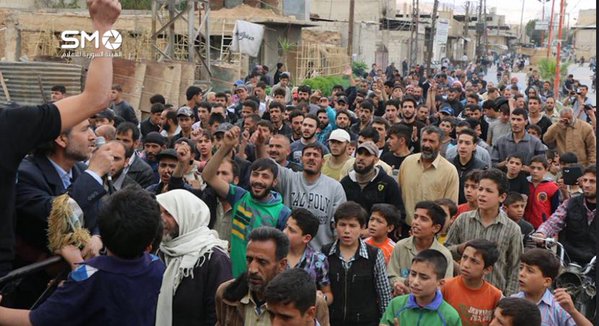During the course of the revolution against Assad that began in Syria in 2011, land was liberated to the extent that by 2013 the regime had lost control over some four-fifths of the country. As the state began to disintegrate, communities needed to build alternative structures to keep life functioning in the newly created autonomous zones.
The model which emerged was based on the vision of Syrian anarchist Omar Aziz, who produced a paper in November 2011, in the eighth month of the revolution, advocating the establishment of local councils.
He argued that it is inconsistent for revolutionaries to participate in protests by day and then return to living within the hierarchical and authoritarian structures imposed by the state. Aziz believed that revolutionary activity should permeate all aspects of life and advocated for radical changes to social relationships and organization.
He called for autonomous, non-hierarchical organization and self-governance, based on principles of cooperation, solidarity and mutual aid. He envisaged the councils as being horizontally organized grassroots forums through which people could work together to achieve three primary goals: to manage their lives independently of the state; collaborate collectively; and initiate a social revolution, locally, regionally and nationally.
Together with comrades, Aziz helped establish the first local council in Zabadani, followed by others in the Syrian cities of Barzeh, Daraya and Douma.
Tragically, Aziz was arrested in November 2012 by Assad regime intelligence agents and held in the infamous Adra prison where he died three months later. Shortly before his death he declared, “We are no less than the Paris Commune workers—they resisted for 70 days and we are still going on for a year and a half.”
Hundreds of local councils have spread throughout Syria, bringing power down to the community level. These are civil administrative structures, and most have selected their members through democratic elections or popular consensus—something unheard of under Assad totalitarianism. Some hold elections every 3-6 months to recall representatives who are not performing well and decisions on issues are taken by majority vote.
They comprise revolutionary activists, professionals and representatives of large families or tribes. In most cases, they retain their independence from political and military factions, and in mixed communities such as in Yabroud, Selemmiyeh and Manbij, local councils included representatives of different ethnic and religious groups.
In the absence of the state, it’s the local councils which continue to provide water, education and healthcare to local communities. They’ve set up alternative sources of energy, such as solar power, and grow food to fight off starvation in communities under siege.
Read more | "Challenging the Nation State in Syria" | Leila Al Shami | Fifth Estate
